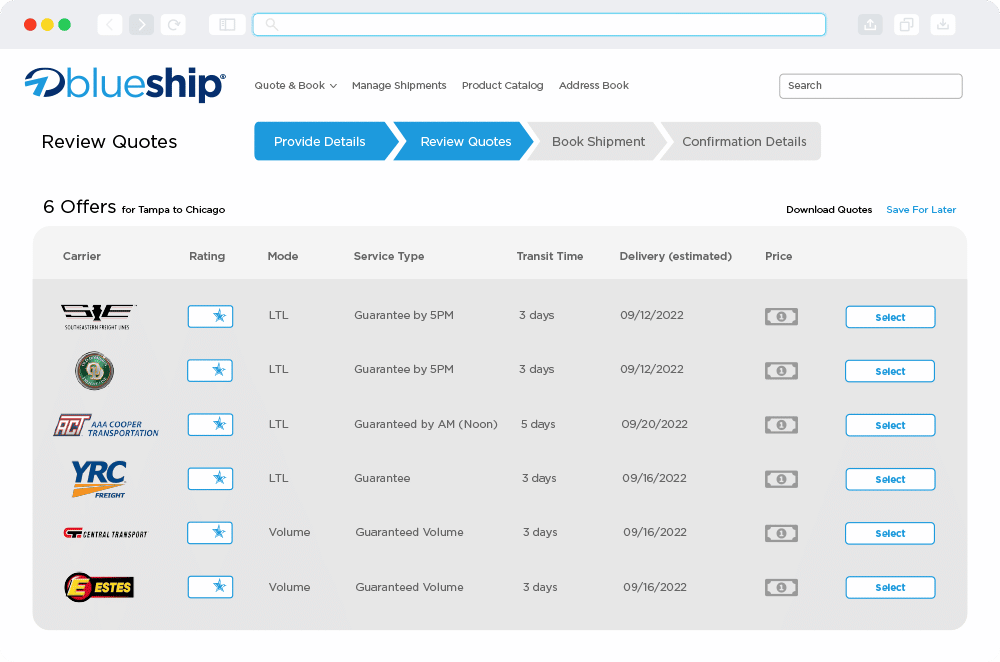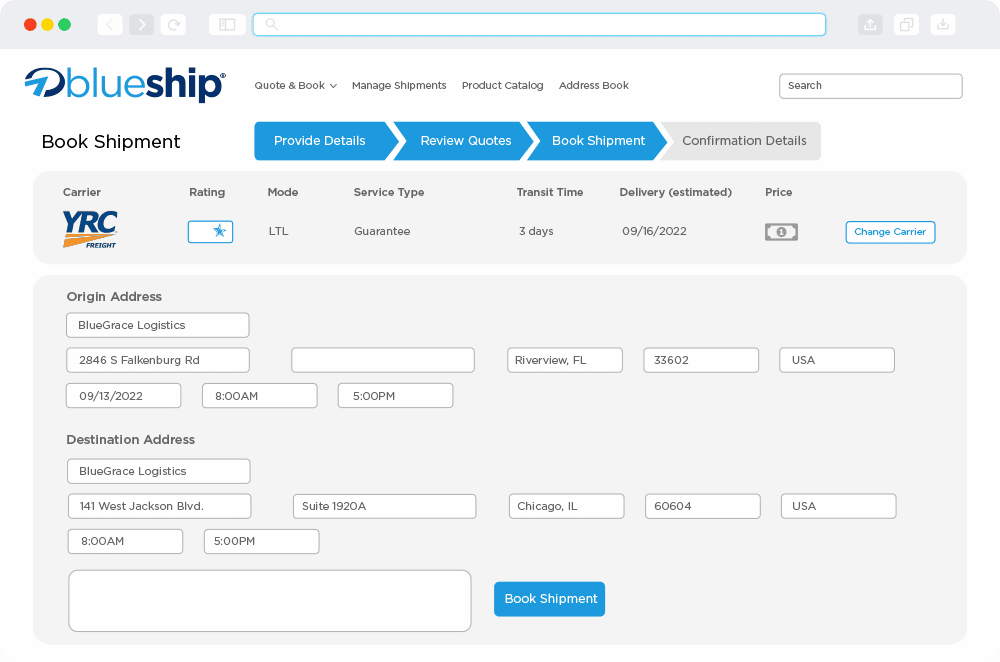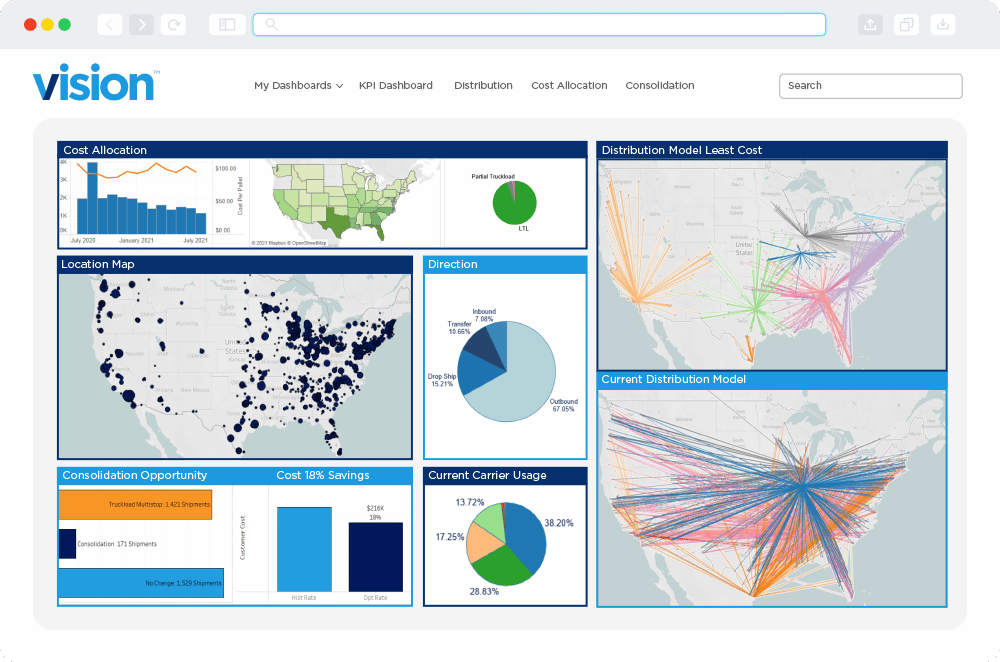
Supply Chain Analytics: What is it and How Can I Apply It?

Data is vital for businesses to thrive, and analytics plays an important role in transforming that data into valuable insights. By leveraging analytics, companies can improve processes, boost productivity, and enhance the bottom line. In the logistics world, supply chain analytics is used to help freight shippers make well-informed decisions that drive efficiency and optimize operations.
In this post, we’ll define supply chain analytics and how you can use it to make practical and decisive actions to improve performance. We’ll also touch on predictive analytics in supply chains to help you understand how you can fine-tune your operations to effectively reduce costs and increase visibility.
Article Overview:
Get Your Free Supply Chain Analysis!
Understanding Supply Chain Analytics
So, what is supply chain analytics? In a nutshell, it is the process of collecting, organizing, and analyzing data that a company’s supply chain system generates. It uses advanced techniques such as predictive analytics to give meaningful insights into operations and performance.
This data can be used to identify trends, potential risks, and opportunities for improvement. It can also help forecast demand, optimize order fulfillment, and improve customer service. The essential elements of supply chain analytics include:
- Connection: Data analytics in supply chain is all about interconnectivity. Interconnectivity means that all components in a system are connected so that data can be shared easily and quickly.
- Collaboration: Collaboration is crucial to success when it comes to data. All stakeholders must collaborate and agree on the same set of objectives to ensure everyone is working toward a common goal.
- Cyber-Aware: Cybersecurity is another essential aspect. Companies must have the right strategies and tools to safeguard their data from malicious or fraudulent activities.
- Cognitively Enabled: Supply chain analytics leverages artificial intelligence (AI) and machine learning (ML) to make predictions and automatically identify patterns in data.
- Comprehensive: This approach to analytics considers the end-to-end view of the supply chain to yield meaningful insights. Companies need to have access to all relevant data points to make informed and progressive decisions.
Benefits of Using Analytics
By leveraging analytical techniques to better understand how different elements of the supply chain interact, shippers and logistics professionals can identify areas that need improvement. The benefits of adopting these analytics include the following:
- Improved Efficiency: By understanding the processes and data that drive the supply chain, businesses can identify areas of inefficiency. Then, make the necessary improvements to reduce costs and increase profitability.
- Increased Visibility: With more visibility into all aspects of the supply chain, companies can anticipate potential disruptions or delays before they occur.
- Better Planning: By using past and present data, you can better predict future demand. This will result in decreased costs from excess inventory or stockouts.
- Enhanced Customer Service: Analytics can provide insight into buying habits. This will enable companies to target customers and tailor their offerings accordingly and more effectively.
Types of Analytics
Several types of supply chain management analytics exist to accommodate different types of companies and their needs. For some companies, having a clear vision of their past performance is integral to shaping their future shipping strategy. On the other hand, other companies rely on predictive analysis to anticipate potential disruptions or delays before they occur.
Regardless of the goals, there are four main types:
- Descriptive Analytics: Descriptive analytics is the most basic form. It uses data from past operations to gain insight into trends, patterns, and other performance-related elements. This is ideal to look back on what has happened in the past, learn from it, and develop a strategy as you advance.
- Predictive Analytics: Supply chain predictive analytics uses historical data to predict future demand, supply, and customer preferences. This is a powerful tool for anticipating potential disruptions or delays before they occur and making proactive decisions to avoid them.
- Prescriptive Analytics: Prescriptive analytics takes it one step further by providing predictions and solutions to address them. For example, when faced with potential disruption in the supply chain, prescriptive analytics can suggest appropriate actions to take.
- Real-Time Analytics: Real-time analytics enables businesses to analyze data in real time and make decisions on the fly. This helps companies respond quickly to changes in the supply chain, such as delays or unexpected demand, and swiftly adjust their operations accordingly.
Key Applications
Supply chain analytics is vital for several critical operations. From determining forecasting supply demand to optimizing inventory and mitigating potential risks, it improves the overall system and benefits all parties involved.
Outlined below are the benefits companies can reap:
- Demand Forecasting and Planning: Using predictive analytics, companies can anticipate customer demand more accurately and plan accordingly.
- Inventory Optimization and Management: By leveraging data from past operations, businesses can identify areas of overstocking and understocking to optimize inventory management.
- Supplier Management and Performance Analysis: Supply chain analytics can help companies understand supplier performance and identify opportunities for improvement.
- Transportation and Logistics Optimization: By analyzing historical data, it helps organizations consolidate shipments, reduce transit times, and improve overall logistics efficiency.
- Risk Management and Mitigation: Real-time analytics can help companies identify potential supply chain disruptions or delays before they occur and take proactive steps to avoid them.
- Real-Time Visibility and Tracking: Real-time analytics enable businesses to track shipments and goods in transit, providing more visibility into their supply chain.
Implementation of Supply Chain Analytics
The implementation aspect is essential for companies that want to stay competitive in today’s market. By leveraging analytical techniques and data from past operations, businesses can identify areas of inefficiency, reduce costs, increase profitability, and improve customer service.
With the right strategies and tools in place, companies can gain a comprehensive view of their supply chain to make informed decisions that will ensure success. Implementing supply chain analytics involves the following steps:
- Clearly Defined Business Objectives: By starting your analytics journey with defined goals, this clarity will guide your implementation strategy and help measure the success of your initiatives.
- Data Collection and Integration: Identify relevant data sources within the supply chain and establish methods for collecting and integrating data. This can include leveraging a Transportation Management System (TMS) and Internet of Things (IoT) devices like sensors and RFID tags. It can also include using Electronic Data Interchange (EDI) that allows sharing between partners.
- Data Quality and Cleansing: Quality data is very important to ensure accuracy. By regularly identifying and fixing errors, this will prepare the data for analysis and transform it into a useable format.
- Technology and Tools: Explore and select supply chain analytics software and platforms that suit your business needs. These tools should provide capabilities for data integration, analysis, visualization, and reporting.
- Pilot a Project: Begin implementation with a pilot project to test and validate the effectiveness of supply chain analytics in your business. Choose a specific area to focus on first to assess the impact before scaling up to the entire supply chain.
Best Practices for Applying
As mentioned above, learning how to utilize data analytics in supply chain is vital to guarantee maximum results. However, there are several tricks you can implement to further improve the outcome. To effectively apply this, consider the following best practices:
- Develop a Data-driven Culture: Foster a culture that values data and encourages evidence-based decision-making. Promote data literacy within the organization and provide training to employees on data analysis tools and techniques.
- Build a Skilled Analytics Team: Establish a dedicated analytics team or consider partnering with external experts, like a third-party logistics (3PL) provider, to leverage their knowledge and expertise. This team should have a strong understanding of supply chain dynamics, analytics techniques, and relevant technology.
- Continuous Improvement: Supply chain analytics is an iterative process. Continuously evaluate and refine your data processes and incorporate feedback. You should also stay up to date with the latest industry trends and advancements in analytics technology.
Supply Chain Analytics Tools and Next Steps
Supply chain analytics plays an important role in enhancing operations and driving sustainable growth for freight shippers and logistics professionals. Businesses can optimize processes, reduce costs, mitigate risks, and improve customer satisfaction by leveraging data-driven insights.
Understanding the core principles, types, and applications of supply chain analytics and implementing best practices empowers businesses to make informed decisions and stay ahead in today’s dynamic business landscape. Embracing data is a transformative step toward achieving operational excellence and maintaining a competitive edge in the industry.
Utilizing a comprehensive supply chain analytics tool like the BlueGrace Logistics Confidence Index is the best way to ensure success and achieve long-term business growth. This index is a significant resource for assessing potential expansion or contraction within the logistics space. By examining revenue forecasts, inventory levels, and order volumes, it offers valuable insights to industry stakeholders regarding expectations for the upcoming quarter. With the use of advanced predictive models, the Logistics Confidence Index helps businesses gain a complete view of their supply chain and make informed decisions to ensure success.
Looking to chat further regarding your supply chain analytics strategy and implementation? Speak with a BlueGrace expert and get a free supply chain analysis today!
Related Posts
Predictive and Prescriptive Analytics in Logistics
Predictive and Prescriptive Analytics in Logistics
View Whitepaper
How to Use Predictive and Prescriptive Analytics to Benefit Your Supply Chain
How to Use Predictive and Prescriptive Analytics to Benefit Your Supply Chain
View The Logistics Blog®
Predictive and Prescriptive Analytics - FreightWaves NOW Interview
Predictive and Prescriptive Analytics - FreightWaves NOW Interview
Read News






